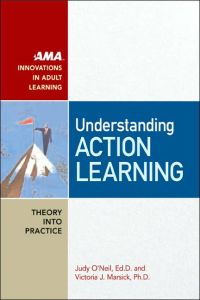Join getAbstract to access the summary!

Join getAbstract to access the summary!
Judy O'Neil and Victoria J. Marsick
Understanding Action Learning
AMACOM, 2007
What's inside?
Action learning engrosses employees in learning as they work, whether they are managers, machinists or maids.
Recommendation
Action Learning (AL) is a popular method for improving organizational effectiveness by learning how to address real problems in real time. Authors Judy O’Neil and Victoria J. Marsick provide a solid introduction to the four AL “schools,” or methods. They help you assess whether AL is right for your firm and, if so, which school of thinking you should choose. They offer good information and give you the basics of getting started with AL. Their book has a familiar textbook style, with case studies and an appendix offering deeper theory. However, awkward phrasing, repetitive language and an academic approach can, at times, distract from the content. Nonetheless, getAbstract thinks the book offers a useful explanation of AL for executives and managers, especially those with human-resource or training responsibilities.
Summary
About the Authors
Judy O’Neil, Ed.D., teaches at Columbia University and serves as president of Partners for Learning and Leadership, Inc. Victoria J. Marsick, Ph.D., also teaches at Columbia and co-directs its J.M. Huber Institute for Learning in Organizations.
















Comment on this summary